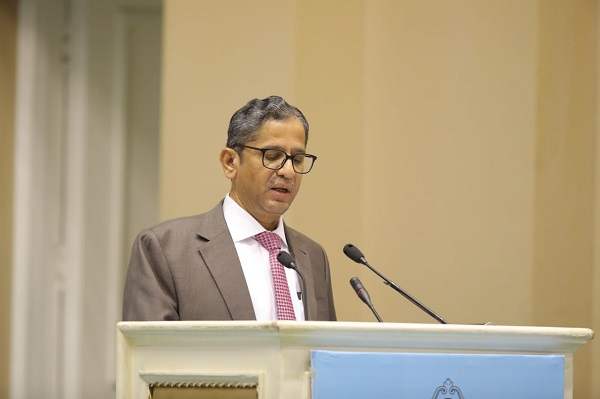New Delhi, (Samajweekly) Ahead of his retirement in August, Chief Justice of India N.V. Ramana on Monday said he thinks that 65 years is too early an age for someone to retire, and also emphasized that people will trust judiciary only if it acts independently.
The CJI was speaking at the 2nd Comparative Constitutional Law Conversation, along with US Supreme Court judge Justice Stephen Breyer, who is retiring in the next two-three months.
On retirement, Justice Ramana said: “Yes, I think 65 years is too early an age for someone to retire. In the Indian judiciary, at the time of joining we know our date of retirement. There are no exceptions. As for me, I am still left with decent amount of energy.”
He emphasised that it is the courts that uphold fundamental rights and the rule of law, and people will trust the judiciary only if it acts independently.
The Chief Justice said he agreed with Justice Breyer’s view that the “job of the judge is not political”. “Once we have taken oaths on the Constitution, once you start working as a judge, I think politics is no more relevant. It is the Constitution which guides us. This is the principle anywhere,” he said.
The Chief Justice also said that the decisions of the Supreme Court on judicial appointments are aimed at sustaining people’s faith and trust.
He added that social and geographical diversity must find its reflection at all levels of judiciary, and with widest possible representation, people get to feel that it is their own judiciary.
“Diversity in the bench promotes diversity of opinions. Diversity enhances efficiency. People from different backgrounds enrich the Bench with their diverse experiences. A judge from rural background understands the issues of rural India better. A judge from a particular region understands the issues of that area better. A judge from marginalised sections understands the issues of marginalised better,” he added.
He said: “I am very happy that the outlook of my collegium is very progressive. In the recent appointments we could select Judges from 9 different states. Three of them are women. I know we have many miles to go. But a beginning has been made.”
On judicial appointments, the Chief Justice said: “Interpretation of the constitutional provisions regarding the appointment of judges had to be undertaken by the Supreme Court only when it felt that there was executive over-reach. In doing so, the Supreme Court followed the basic structure doctrine.
“There is an impression that in India, judges appoint judges. It is a wrong impression and I want to correct that. The appointment is done through a lengthy consultative process. Many stakeholders are consulted. The executive is one of the key stake holders.”
The Chief Justice also elaborated on the process of appointment of judges to the high courts and added that the selection process is very democratic. “Only after taking into account a wide range of opinions from diverse sources, the collegium forms its opinion. Most of the times it is unanimous opinion. I don’t think a selection process can be more democratic than this,” said the Chief Justice.
On judicial infrastructure, he said: “What we need is world class infrastructure. Courts should be welcoming and carry the requisite dignity. That is why I have proposed the creation of independent statutory Authorities at the national and state level. Such Authorities, with functional and financial autonomy, would ensure timely execution of modernisation projects with uniformity and standardisation.”










